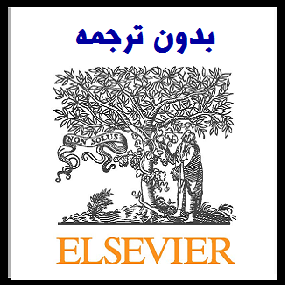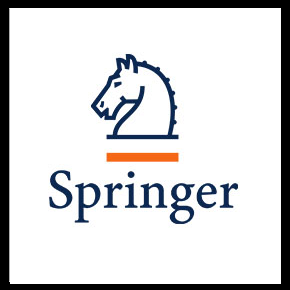مقاله انگلیسی فرار از پرداخت مالیات شرکت (2016 الزویر)


| عنوان فارسی مقاله | رقابت و فرار از پرداخت مالیات شرکت: یک دیدگاه مبتنی بر موسسه |
| عنوان انگلیسی مقاله | Competition and corporate tax evasion: An institution-based view |
| نمونه مقاله انگلیسی | ۱٫ Introduction
In international business, the institution-based view asserts that firm behaviors around the world are affected by the rules of the game—specifically institutions that govern the “do’s” and the “don’ts” (Dunning & Lundan, 2008; North, 1990; Peng, Ahlstrom, Carraher, & Shi, in press; Peng, Wang, & Jiang, 2008). However, not all firms comply with all the rules and regulations. Instead, corporate misconduct is frequent around the world. One of the most ubiquitous illegal corporate behaviors in almost every country is corporate tax evasion, which is defined as a managerial decision not to fully report taxable corporate profit in order to reduce tax payments (Sandmo, 2005).1 Past research has identified several factors that influence the likelihood of corporate tax evasion (Andreoni, Erard, & Feinstein, 1998), such as public sector corruption (Friedman, Johnson, Kaufmann, & Zoido-Lobaton, 2000; Goerke, 2008), tax rates (Cowell, 2004; Fisman & Wei, 2004), degree of penalties (Gordon, 1990), fairness of the tax code (Cullis and Lewis, 1997), and effectiveness of corporate governance mechanisms (Desai & Dharmapala, 2006; Desai, Dyck, & Zingales, 2007). However, the interplay between formal and informal firms is underexplored in the literature (Mathias, Lux, Crook, Autry, & Zaretzki, 2015). Due to significant variations in the prevalence of the informal economy across countries, international business (IB) research would benefit from a better understanding of the dynamics of competition between these two groups of firms, and the resulting effects on formal firms’ tax compliance decisions. Specifically, what is the effect of informal economic activity on formal firms’ tax evasion decisions? What are some boundary conditions that affect formal firms’ tolerance of such informal competitive pressures? Defined as “economic activities that occur outside of formal institutional boundaries but which remain within the informal institutional boundaries for large societal groups” (Webb, Bruton, Tihanyi, & Ireland, 2012, p. 599), the informal economy operates in every country. Today the informal economy contributes between 10%–۲۰% of the gross domestic product (GDP) in developed economies, and 40%–۶۰% of GDP in developing economies (Godfrey, 2011; Webb et al., 2012). Informal firms are defined as “businesses that are unregistered but derive income from the production of legal goods and services” (Nichter & Goldmark, 2009, p. 1456; see also: Bruton, Ireland, & Ketchen, 2012). Following such a definition, our definition of informal firms does not include firms that are dealing with illegal goods and services (i.e. drugs, weapons that are traded outside of the law, or other sorts of criminal activity). Instead, we focus on the informal firms that transact in the market of legal products and services, albeit not complying with governments’ reporting requirements. Thus, it is the means they choose to carry out their business thatsituates them outside of the formal economy. On the other hand, formal firms are defined as the registered businesses bound by governments’ rules and regulations. The old view that “the informal sector is the traditional economy that will wither away with modern industrial growth” is replaced with the understanding thatthe informal economy is here to stay—in practically every country (Chen, 2008, p. 5). For instance, studying the size of the informal economy in 151 countries, Schneider, Buehn, and Montenegro (2010) found that on average, the share of the informal economy has remained largely the same between 1999 and 2007 (33% and 31% of GDP, respectively, as world average). espectively, as world average). Given that informal firms are not going away, the strategies used by formal firms to cope with such “unfair” competition from the informal sector are therefore of particular interest. While the activities of informal firms circumvent any government regulation, many formal firms also locate themselves on the boundaries of formality by not fully complying with the regulatory authorities (Bruton et al., 2012). Scholars have called for research on this topic to “examine in a more nuanced way what drives the decision regarding where along the formal-informal continuum a firm chooses to locate” (Bruton et al., 2012, p. 3). We look at both informal and formal institutional factors that affect such choices. Leveraging the institution-based view (Ahuja & Yayavaram, 2011; Khanna, Palepu, & Sinha, 2005; Meyer & Peng, 2016; Peng, Sun, Pinkham, & Chen, 2009), we argue that the degree of competition from the informal economy changes the rules of competition such that formal firms must not only deal with other formal firms, but also with informal firms. Informal firms have inherent advantages through cost savings generated by circumventing government oversight in matters such as taxes, labor laws, and other regulations (Karlinger, 2014; Schneider & Enste, 2000). Formal firms may therefore refrain from fully reporting their revenues for tax purposes in an effort to survive and compete with informal competition. |
| سال انتشار | 2016 |
| ناشر | الزویر |
| مجله | مجله کسب و کار جهانی – Journal of World Business |
| کلمات کلیدی | اقتصاد غیررسمی، رقابت، موسسات، فرار از پرداخت مالیات شرکت |
| صفحات مقاله انگلیسی | 12 |
| مناسب برای رشته | حسابداری،مدیریت |
| مناسب برای گرایش | حسابداری مالیاتی، مدیریت کسب و کار MBA |
| توضحیات | این مقاله انگلیسی جدید بوده و تا کنون ترجمه نشده است. جهت ثبت سفارش ترجمه از لینکهای زیر استفاده نمایید. |
| دانلود مقاله انگلیسی | ○ دانلود رایگان مقاله انگلیسی با فرمت pdf (کلیک کنید) |
| سفارش ترجمه فارسی | ○ سفارش انجام ترجمه و تایپ این مقاله (کلیک کنید) |
| سایر مقالات این رشته | ○ مشاهده سایر مقالات رشته حسابداری (کلیک کنید) |



